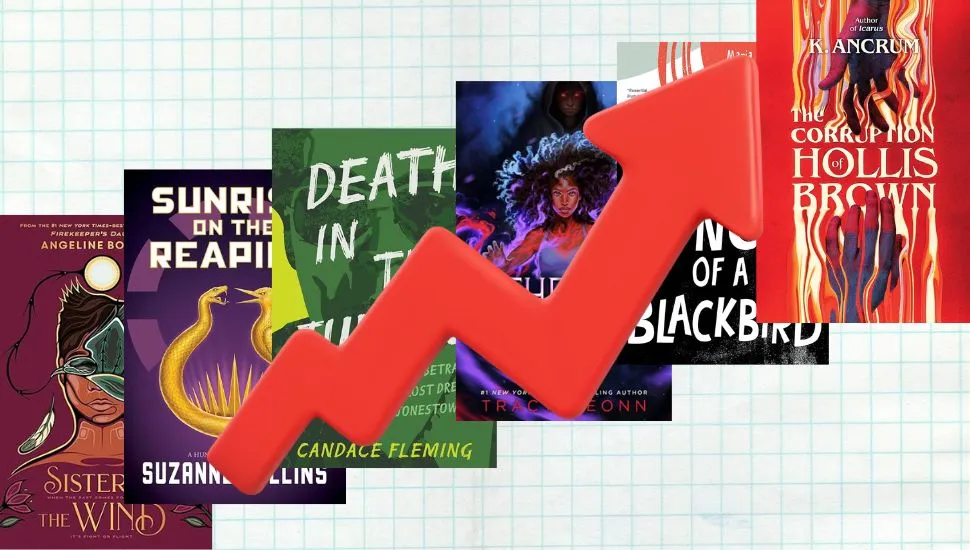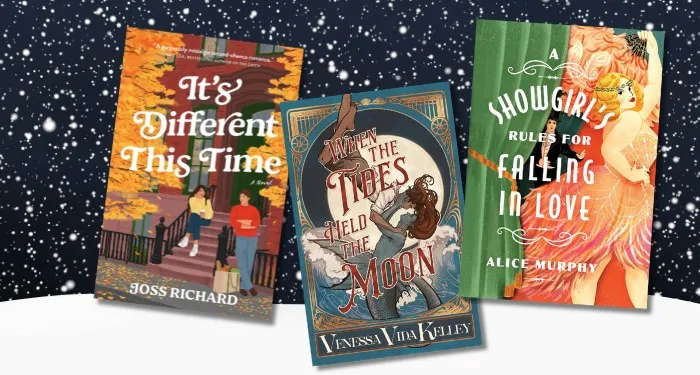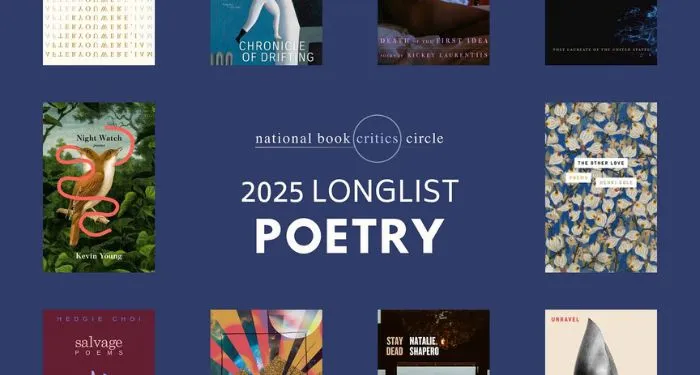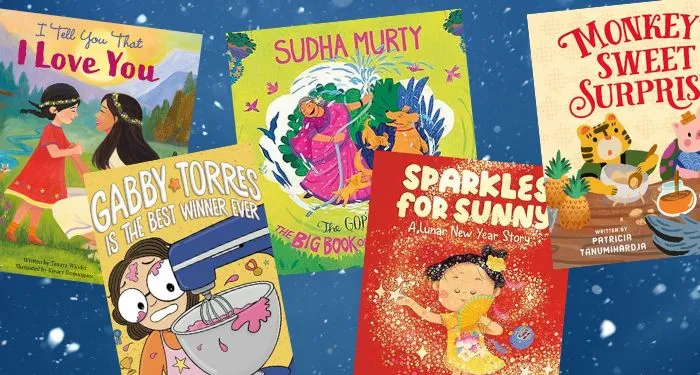Advertising and Marketing
Every year, Halloween romances surge, Christmas novels take over the charts, and familiar holiday titles rise from the dead to dominate sales again during their season. If you’re an author watching this from the sidelines, it’s natural to wonder whether jumping into the seasonal market could boost your own visibility and income. There are real opportunities in publishing holiday-themed books, but the picture is far more complicated than many writers expect.
On the pro side, you have predictable buying patterns, genre flexibility, and the potential for annual evergreen sales. On the con side, you face narrow sales windows, intense competition, and the financial risks that come with relying on a single holiday title. In today’s blog, Ginger breaks down both the advantages and the challenges of seasonal fiction, then shares practical strategies to help authors who want to explore holiday releases do so in a balanced and sustainable way.
It’s that time of year again. Every autumn, something magical happens in the romance community. The Pumpkin Spice Café by Laurie Gilmore reappears on Goodreads’ “most read” list. Halloween-themed romance novels start trending. Come December, Christmas romances dominate the bestseller charts. For self-published authors watching these patterns, a tempting question emerges: Should I be writing seasonal fiction?
(And, if you’re anything like me, it’s a question you often ask way too late to actually do anything about it!)
Unfortunately, the answer isn’t as simple as “deck the halls and start typing.” Seasonal fiction—stories centered around Halloween, Christmas, Valentine’s Day, and other holidays—absolutely offer unique opportunities to aspiring authors. However, they also present significant challenges, and understanding both sides of this equation is essential before you invest months writing a book that might only sell for a few weeks each year.
And on this subject, I speak from experience. I wrote a seasonal novel myself: a steamy romance inspired by the classic holiday movie Die Hard (and yes, it is a holiday movie.) I’ve seen how this book has ridden the roller coaster of seasonal sales over several years, and I’ve been able to learn a lot from it.
Following the Money
Let’s start with the most compelling argument for writing holiday books. Readers buy a lot of them, and they buy them predictably.
Almost 25% of all book sales throughout the year occur during the holiday season, with nearly 12% happening around Christmas alone. Approximately 30% of book sales occur during November and December, creating a massive spike in purchasing behavior that savvy authors can capitalize on.
The week before Christmas traditionally sees the biggest book-buying surge of the year, with sales jumping 30.5% over the previous week and units topping 29.6 million. Easter week also posts significant increases, with sales up 17.2% over the previous week.
For romance authors specifically, the opportunity is even more pronounced. Christmas romance has become its own thriving subgenre, with dedicated readers who consume multiple holiday books each season. These readers actively seek out new titles starting in October, building their “Christmas TBR” (to be read) piles months in advance.
It’s similar to the way the Hallmark Channel will have wall-to-wall holiday movies scheduled for November and December. People just LOVE holiday escapism!
And this predictability is perhaps the most attractive feature about writing seasonal romance. Unlike general market fiction, where trends can shift unpredictably, seasonal fiction has built-in demand that successful authors can rely on each and every single year.
That means a Halloween romance written in 2023 can experience a sales resurgence every October, which is something general fiction never experiences. My Die Hard-themed Christmas romance performs similarly, scoring sales every holiday season and becoming an evergreen asset that generates revenue annually without any additional marketing investment.
Seasonal books also benefit from clear marketing windows. You know exactly when to run promotions, when to invest in advertising, and when readers are actively searching for your content. This removes much of the guesswork from book marketing, allowing you to plan campaigns months in advance with confidence.
The genre flexibility is another advantage. Seasonal fiction isn’t limited to romance. Horror and thriller writers can obviously capitalize on Halloween. Cozy mystery authors are a natural match for Christmas-themed installments. Fantasy writers can also get in on the action, exploring winter-themed and solstice celebrations without having to explicitly make them Christmassy. Whatever your primary genre, there’s likely a seasonal angle you can explore… or invent! (Christmas-themed epic space adventure, anybody?)
The Narrow Window Problem
But as exciting as that sounds, it’s now time for the sobering reality. While seasonal books have a built-in sales window, it’s extremely limited. And that limitation creates challenges for those of us trying to build sustainable careers out of our self-published writing.
Traditional publishers have long understood what they call “shelf life”—the length of time a book remains commercially viable. For most fiction, shelf life can extend for years or even decades through effective advertising and marketing. The reason I became so passionate about direct sales is because I wanted to leverage the books I’d already written, instead of constantly trying to write and launch new ones.
But for seasonal books, you’re often looking at 6-12 weeks of strong sales annually, followed by eleven months of minimal movement. It’s an inherently boom-or-bust economic model.
If you’re a traditional publisher with a massive catalog of Christmas fiction and a well-established distribution network, you can rake in a fortune during Christmas and let that support you through the rest of the year. It’s far more challenging to accomplish that when you’re an indie author.
The math is brutal. If you spend three months writing a Christmas romance, you’re investing significant time in a product that might only generate meaningful revenue for two months each year. Compare this to a standalone contemporary romance or the first book in a series, which could theoretically sell consistently throughout the year (and with proper marketing, potentially generate profit for years after publication.)
There’s also competition to think of, which intensifies during seasonal windows. When your Halloween romance launches in October, it’s competing with hundreds or thousands of other Halloween-themed books, all fighting for the same reader attention. Visibility becomes exponentially harder to achieve, and advertising costs typically spike as authors bid against each other for the same keywords and audiences.
This probably won’t impact most self-published authors, but there’s the inventory challenge to think of as well. If you’re planning to sell your copies at fairs or events during the holiday season, you might order too many physical copies and they don’t all sell, which means you’re stuck with unsellable inventory for the next eleven months.
This is a real issue for traditional publishers and bookstores, for whom January and February will herald “the season of book returns” when overstocked books from the Christmas season come back, creating losses that can really dig into (or even wipe out) earlier profits.
Seasonal books also struggle with discovery outside their window. Amazon’s algorithm and other recommendation engines prioritize books that sell consistently. A Christmas book that only moves copies in November and December will have weaker algorithmic support year-round compared to books with steady sales patterns. This creates a vicious cycle where seasonal books become even more dependent on their narrow windows.
Then there’s the reader expectation problem (I know, I know, we shouldn’t describe readers as a problem!) Seasonal fiction readers generally want specific tropes, settings, and even aesthetic elements that feel “on brand” for the holiday. This can limit your creative freedom and push you toward formulaic storytelling if you want to be successful, essentially becoming a seasonal story factory the way Hallmark does every November and December.
Sure, you can take creative risks, but write too far outside expected conventions and you’ll risk disappointing readers who came for cozy Christmas vibes or spooky Halloween scares. Meeting reader expectations isn’t just essential for selling your current books, it also establishes a reader/writer relationship that can help make (or break) the chances of them buying other books from your catalog.
The Hybrid Approach
The good news about writing seasonal fiction is that you don’t need to invest all your efforts into the make-or-break gamble of holiday success. Most successful self-published authors leverage holiday-themed books as part of a middle-ground strategy that captures seasonal opportunities without becoming overly dependent on them.
For example, authors who write a series in which most books work year-round might choose to release a seasonal novella or bonus story for dedicated fans. This gives readers who’ve already discovered your work something extra to enjoy during the holidays without requiring your entire catalog to depend on seasonal sales. Your series continues to sell throughout the year, but the holiday installment provides a December boost (it’s like a Christmas present to yourself!)
Another strategy is to write “seasonal-adjacent” books. That is, stories with holiday settings or themes that aren’t exclusively tied to the specific date. A romance set at a ski resort can work throughout winter, not just in the weeks leading up to Christmas. Likewise, a small-town story featuring a harvest festival appeals to fall readers without being locked into Halloween. This broader seasonal approach extends your sales window from a few weeks to a few months, and also appeals to readers looking to enjoy the magic of fall during the sweltering summer months, or experience a tropical romance while the wind and snow is hammering at their front door.
Some authors create seasonal anthologies with other writers, sharing the workload and marketing costs while producing a product substantial enough to compete during the crowded seasonal market. A collection of five Halloween romance novellas from five authors spreads the risk and provides more promotional firepower than a single author working alone. Although this approach does open up a whole new can of worms in terms of which author is responsible for publishing the book, and how the other contributors expect to get their royalties.
If you’re serious about your writing business and working to build a bigger and bigger catalog of books, the best approach might be to treat seasonal books as long-term investments. Rather than expecting immediate returns, authors who build a catalog of holiday stories can generate increasing revenue from them year after year. Your first Christmas romance might earn modest sales its first December, but by year five—when you have five Christmas titles—the combined catalog could be big enough to produce a meaningful holiday bonus.
Marketing Seasonal Fiction Effectively
So, let’s assume you’ve decided on your seasonal strategy, and you’re dialed into writing some holiday-themed books. At this point, your marketing approach will become critical to success. The compressed timeline means you can’t afford to waste promotional opportunities.
My first recommendation might surprise you. Although I’ve been going on about direct sales for months now, I think Amazon is a stronger place to market your seasonal fiction. On Amazon, you can leverage discoverability in a way that simply isn’t possible with direct sales—it’s one period in which the algorithm can actually work in your favor.
My first recommendation is to start early, much earlier than you think. Readers begin looking for Halloween books in September and Christmas books as early as October. Your marketing should ramp up at least 6-8 weeks before the actual holiday. This means summer planning for Halloween books and early fall preparation for Christmas releases.
Pre-orders become exceptionally valuable for seasonal fiction. They allow you to build momentum before the competitive window hits hardest. A strong pre-order campaign in September for a Halloween release means you’re already gaining visibility long before the October rush. And when your book goes live, those pre-orders will hopefully give you a significant boost in ranking and visibility.
Likewise, you should leverage seasonal keywords aggressively. During your book’s season, search terms like “Christmas romance,” “Halloween mystery,” or “Valentine’s Day fiction” see massive spikes in volume. These aren’t competitive year-round keywords, they’re only valuable during specific windows. But during those windows, they’re gold. Adjust your Amazon keywords, advertising campaigns, and metadata to capitalize on this seasonal search behavior. Use tools like Publisher Rocket to find the most powerful and most competitive keywords and search strings to use to edge your book to the front of search results.
Visual marketing also matters much more for seasonal books. Just like readers have expectations for what they’ll read in a seasonal book, they’ll have expectations for what the cover and marketing graphics will look like.
Using seasonal graphics with appropriate color palettes and imagery helps books stand out. Think orange and brown for fall, or festive elements for Christmas. Your cover, promotional graphics, and social media content should immediately signal the holiday to potential readers scrolling through endless options. In my Facebook ads, I like putting little Christmas hats on my book covers!
Bundle strategies also work particularly well. You can package your books up into a limited-time seasonal bundle, or (if you’re leveraging direct sales) sell the individual books as a one-click bundle with a discount code. Bundled books don’t just create higher perceived value. They’re also more profitable to market, and can capture eager readers looking to stock up on a bunch of holiday reads in a single purchase.
And while targeting the season is the foundation of your marketing approach, don’t neglect the off-season entirely. A small percentage of readers consume holiday content all-year-round, like those folk who never take down their Halloween decorations. You’d be surprised how many people read Christmas romances in July because they love the genre, not the calendar.
While you shouldn’t invest heavily in off-season marketing, maintaining minimal visibility ensures you capture these year-round readers and keep your book in Amazon’s algorithm. And one of the upsides is that seasonal keywords are much less competitive when it’s not the season!
Finally, email marketing becomes your most valuable asset with seasonal fiction. Readers who enjoyed your Halloween romance last year are prime candidates for this year’s Halloween release. Building an email list of seasonal fiction fans allows you to reach them directly whenever the sales window for this year’s book opens, and email remains one of the most powerful marketing tools because you can leverage it without competing in crowded advertising marketplaces.
The Timing and Format Question
Perhaps we’re getting a little ahead of ourselves talking about marketing. You have to publish the book first, and when it comes to seasonal fiction, publication timing requires careful consideration.
For Christmas books, most successful authors launch in October or early November at the latest. Launch too early and you miss the peak buying window. Launch in December and you’ve already lost weeks of your compressed season.
The real holiday season for books typically starts around mid-November, with sales rising 11.1% the week ending November 10. This means your book needs to be not just published, but gaining traction by early November to capture the full wave.
Halloween books should ideally be published in September, giving them time to build reviews and visibility before October’s peak search period. Valentine’s Day books need January launches. Easter books should arrive by late February.
Format considerations also matter. The advantage of eBooks for seasonal fiction is that there’s no inventory risk—you’re never stuck with unsold physical copies. However, 30-40% of consumers plan to purchase books as presents during the festive season, and many prefer giving physical books. Having print options available through print-on-demand captures gift-givers without putting you on the hook for unsold inventory.
Audiobooks for seasonal fiction remain underexplored territory with a lot of potential. Listeners consume audiobooks year-round, and seasonal content might find audiences during relevant months who wouldn’t have discovered your work otherwise. The production investment is significant, but audiobooks can extend the commercial life of seasonal fiction, and if you’re taking your self-publishing career seriously, audiobooks should already be part of your strategy.
Now, here’s some good news. Shorter formats work surprisingly well for holiday stories. Novellas (20,000-40,000 words) allow readers to consume multiple seasonal stories without major time investments.
As far as you’re concerned, this makes seasonal fiction much faster to write, meaning you can build a seasonal catalog more quickly than you could with evergreen titles. Many successful seasonal fiction authors focus exclusively on novellas, producing multiple titles each year while maintaining full-length, year-round releases in other genres.
Seasonal Fiction Depends on Your Goals
So, should you write seasonal fiction? Like most publishing decisions, the answer depends on your specific circumstances and goals.
Write seasonal fiction if:
- You already have a stable backlist generating year-round income
- You genuinely love holiday themes and will write them well
- You’re building a catalog approach with multiple seasonal titles
- You enjoy the focused marketing windows and clear targeting
- You want predictable annual revenue spikes to plan around
Avoid seasonal fiction if:
- You’re just starting out and need consistent monthly income
- You’re solely motivated by perceived “easy money” in holiday markets
- You lack time for the aggressive, tightly-timed marketing required
- You only plan to write one seasonal book
- You’re uncomfortable with the competitive, crowded market dynamics
The most successful approach for many self-published authors involves balance. Build your primary catalog with year-round books that form your financial foundation, then supplement those books with seasonal offerings that can provide seasonal revenue boosts and new and interesting reader touchpoints.
Think of seasonal fiction as seasoning, not the main course. A Christmas novella can be a delightful addition to your author brand, introducing new readers to your writing and giving existing fans something extra. However, if your entire career depends on selling 80% of your books during 8 weeks each year, you’ve got yourself into an unnecessarily precarious business model!
The beauty of self-publishing is flexibility. You can experiment with a single Halloween novella, see how it performs, and adjust accordingly. If it resonates with readers and you enjoy writing seasonal content, expand that part of your catalog. If it underperforms or feels creatively limiting, you’ve learned something valuable without derailing your entire author career.
Seasonal fiction offers genuine opportunities for self-published authors willing to navigate its unique challenges. The concentrated buying patterns, predictable reader demand, and annual renewal of interest create advantages that few other fiction categories provide.
However, these benefits come packaged with narrow sales windows, intense competition, and economic models that require careful planning to make them profitable.
For some authors, seasonal fiction is a lucrative specialty that defines their brand. For others, it’s an occasional creative diversion that adds variety to their catalog. Both approaches can succeed, the key is entering the market with realistic expectations and a clear understanding of what you’re signing up for.
As for me? I’m fairly happy with my one seasonal title. I enjoyed writing it. I enjoy seeing it make sales every holiday season. However, I’m too ADHD to really leverage the seasonal marketplace, so I’d prefer to focus my efforts (and my attention) on books that sell year-round.
Or, at least, that’s how I feel right now. The great thing, however, is that the holidays will come again next year, and the year after that, no matter what I’m writing.
Whatever I’ve decided about seasonal fiction now, the opportunity isn’t disappearing. I might find myself inspired in the future and pen another Christmas romance, or Halloween adventure. I’ve already got a strategy down, it’s just a case of taking advantage.
But what do you think? Do you like writing seasonal fiction? Have you had any success with it? I’d love to read your take in the comments section below.
Share this blog
About the Author

Ginger is also known as Roland Hulme - a digital Don Draper with a Hemingway complex. Under a penname, he's sold 65,000+ copies of his romance novels, and reached more than 320,000 readers through Kindle Unlimited - using his background in marketing, advertising, and social media to reach an ever-expanding audience.



















 English (US) ·
English (US) ·